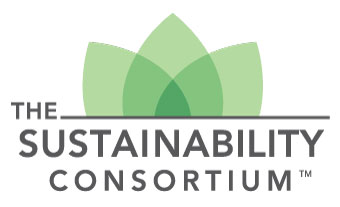CASE STUDIES
As part of the Walmart 2016 Index reporting period, TSC ran support webinars for 680 individuals from 532 Walmart suppliers and managed 273 help desk queries. After the Index, TSC surveyed those companies, members, and other stakeholders to learn more about their experiences with TSC surveys, and their future plans. The results give us the first empirical evidence that our theory of change is working. 252 suppliers responded to TSC’s customer satisfaction survey, an 18% response rate, which is very high for a voluntary survey.
The median annual revenue of companies responding to our Customer Satisfaction Survey was in the $10-100M range, with a number of companies over $1B, and a few less than $1M. The distribution of companies per sector was representative of the Walmart Index survey. On average, companies said they took 7 people-days to respond to the Walmart Index survey, but this number had a very wide variance, from two hours to four weeks.
Companies told us that the biggest barrier to answering the KPIs was understanding the KPI question and guidance, and that calculation spreadsheets and other data collection tools would be valuable for TSC to provide. This was one of the key reasons we started the Producer Toolkit Project in 2017.
The question that addressed our theory of change most directly was:
What is the most significant change you have made to your operations based on the desire to respond more positively to one or more of your survey(s) Key Performance Indicators (KPIs)?
Improvements
Of the 252 companies responding, 40% of them made some changes to their practices in order to improve one or more KPI scores.
Internal systems
The most common improvement was to develop internal systems for collecting data and to communicate the importance of sustainability internally. Here are some anonymous quotes to that effect:
“Created closer ties between internal business units and internal sustainability team.”
“Established an internal team to respond to the survey.”
“Improved communication with factories regarding sustainability.”
“Put in place better tracking tools.”
Supplier Engagement
The second most common improvement was engagement and collaboration with suppliers.
“Brought executive attention to the need to push sustainability expectations deeper into our own supply chain.”
“Started data collection 6-7 months earlier than the survey deadline and supported all suppliers to set up their energy records and GHG inventory.”
“Tracked suppliers water, electric, gas usage to look at ways to reduce energy costs.”
“Our procurement team has a procurement sustainability initiative to enroll suppliers into CDP and EcoVadis to help with reporting these metrics.”
“We have never asked our Vendors to share with us any of the sustainability information. Most still don’t keep their own records of any contribution however we will begin to have this as part of our conversation going forward.”
“We used Field Print calculator with one of our grower subsets and incentivized participation.”
“Our suppliers now understand the need to have traceability throughout the supply chain.”
Other Improvements: Process and product change, public communication
Companies mentioned that they had made changes to processes or products to improve sustainability, and communicated their public goals.
“Changes/improvements in our irrigation system and reduced tillage.”
“Organization formally assesses resource conservation and material and process efficiency as part of product design.”
“(Made product EPA) DfE (compliant)”
“(Move to) recyclable packaging, employee training on reducing packaging size/volume.”
“We are moving to 100% RSPO certified palm oil supply & compostable packaging for some of our products.”
“Reconsidered excess packaging. Put a greater emphasis on shipping efficiency.”
“Reduced emissions, packaging footprint, direct import to reduce fuel usage, change materials where possible.”
“Put ingredient listing statements on website.”
“Working on implementing a zero waste to landfill program.”
From these comments we can sense it’s not just about getting a better Index score – these companies are seeing and realizing the business case for sustainability improvement.



